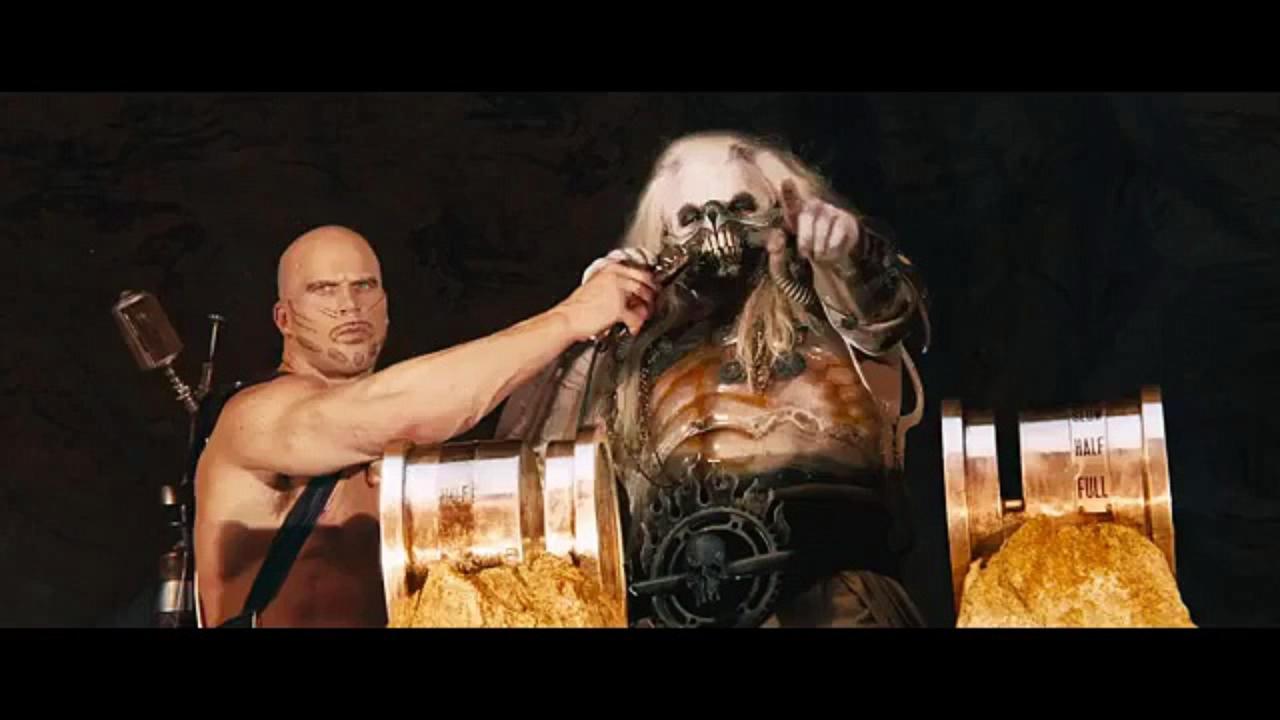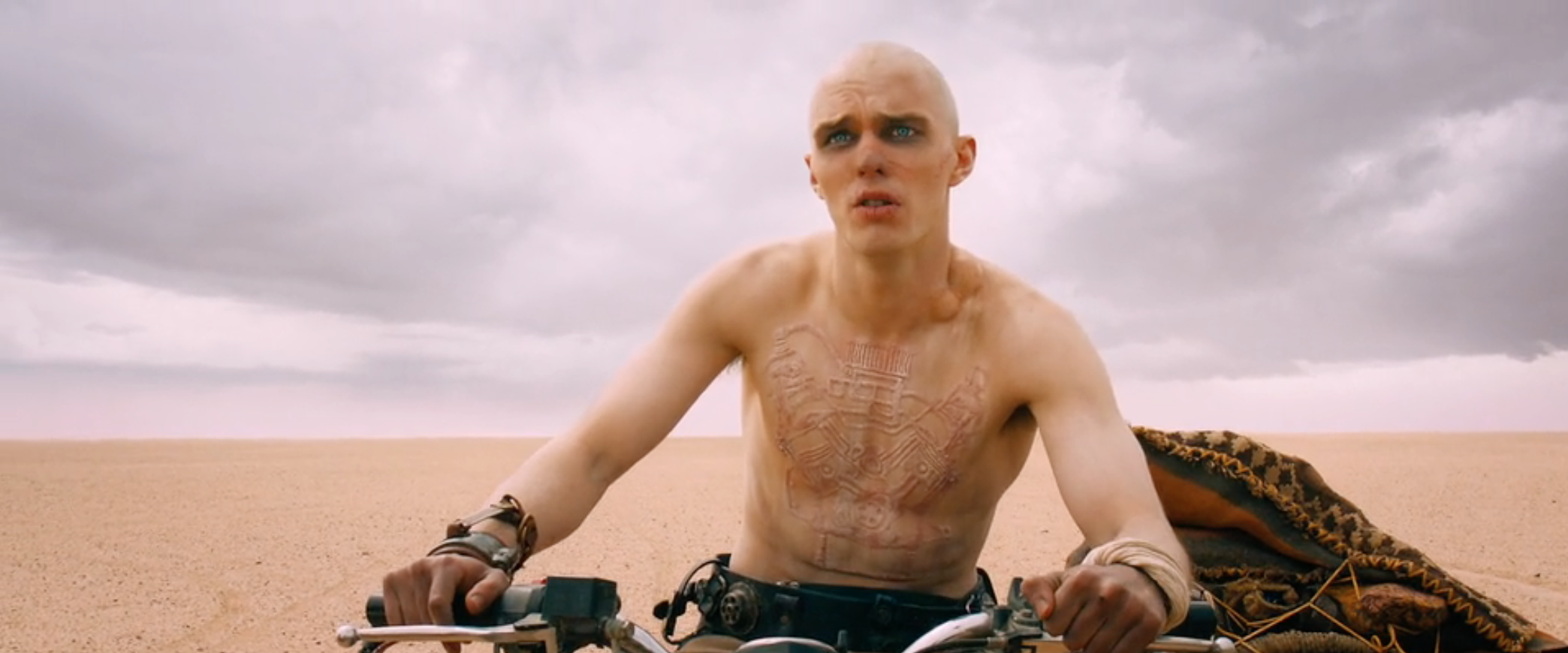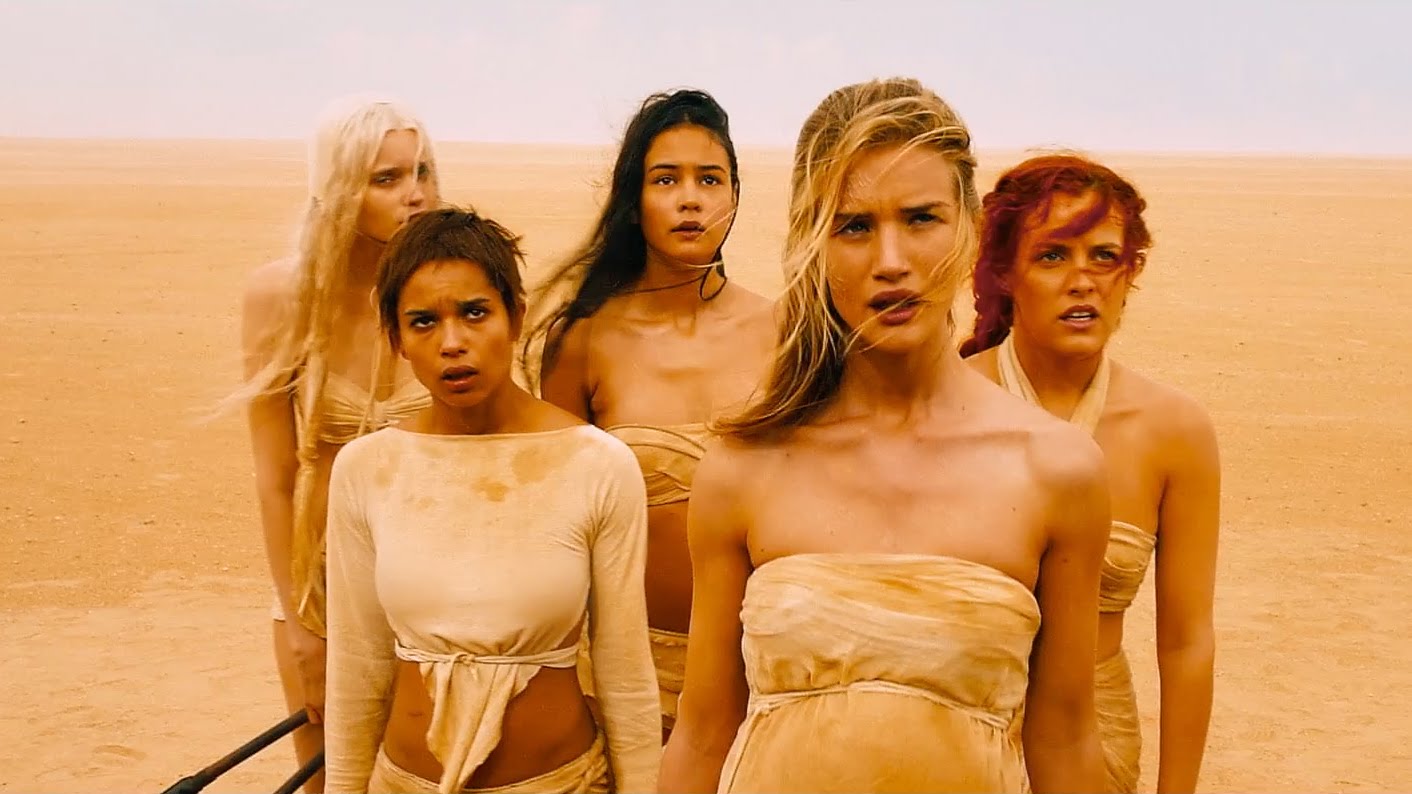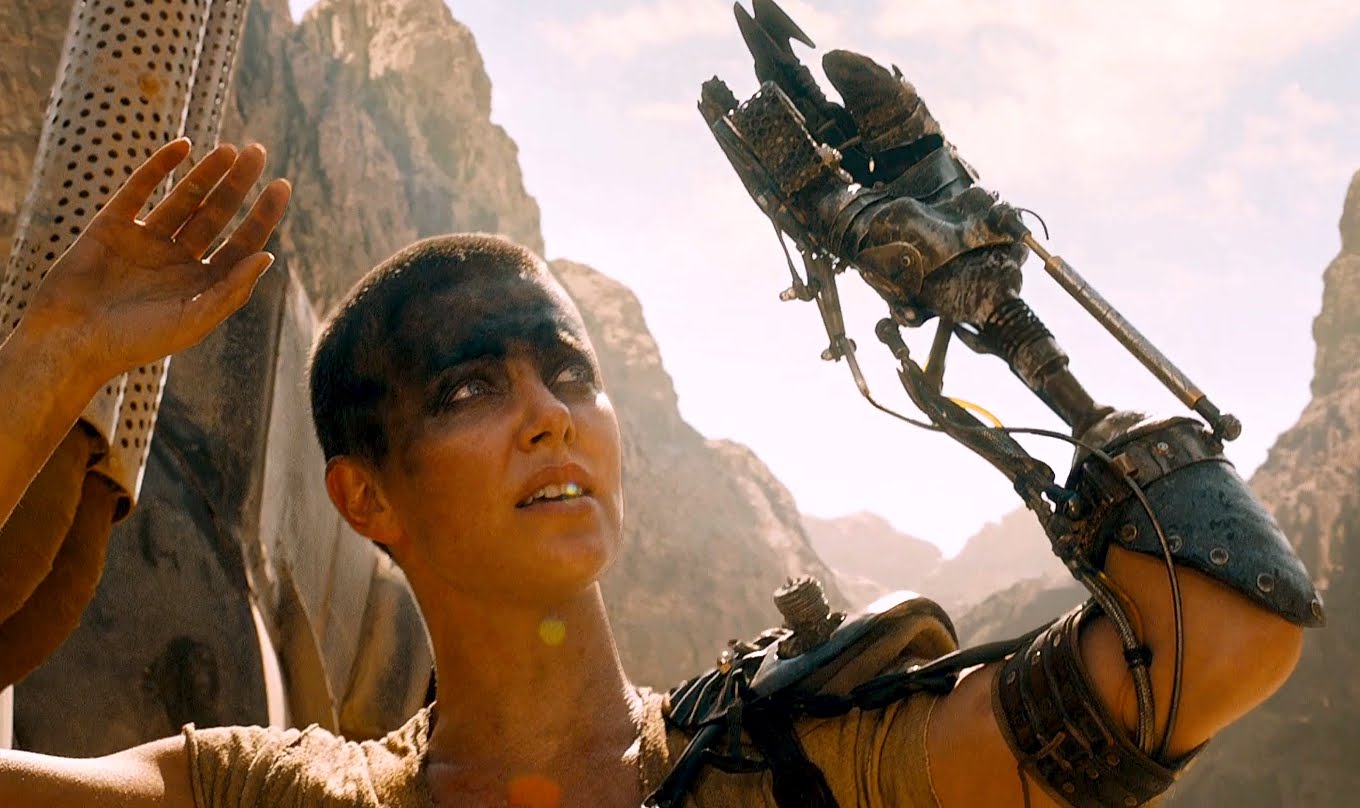How does “Mad Max: Fury Road” explore the themes of objectification and humanity?
In the apocalyptic world of Mad Max: Fury Road (2015), everything has been reduced to commodity. If something does not serve a functional purpose it has no value, and life is based on objectification purported by domineering overseers like Immortan Joe (Hugh Keays-Byrne).
Joe sees everyone and everything as a possession. Requiring a machine-operated body suit to keep him alive, he has constructed a society that utilizes human machines to function and thrive. Within his community are the War Boys, multitudes of people shaved and painted white who are doomed to short lives, only existing as fighting tools in Joe’s army. They strive for nothing more than Joe’s appreciation and approval, hoping to sit by him in the chrome-plated wonder of Valhalla where they expect to find eternal life. One of the War Boys, Nux (Nicholas Hoult), uses Max (Tom Hardy) as a blood bag for the first act of the film, introducing Max as a commodity to be drained within the War Boys’ environment. All of this dehumanization and utility of resource sets up the theme of the film: Fury Road is a story about people fighting against objectification. Joe shaves the heads of his War Boys and covers them in white paint with black eye sockets to resemble skeletons as a means of indoctrinating them into their servitude to Joe. By doing this, he becomes their savior. Of course, he is a false messiah who operates a belief system founded on pretense and vanity.

War Boys fight on vehicles, identifying their bodies as a piece of battle machinery that completes the experience. Before sacrificing themselves in Joe’s name, they huff a silver spraypaint-like substance that is symbolic of them becoming one with the chrome of the vehicle, and the instrument of death. (It’s also true that “chroming” is slang in Australia for inhaling vapors from volatile substances.) By doing this, they are sealing their fate to Joe and becoming his property. Before they can even set out into battle, they grab a steering wheel from a pile decorated with Joe’s skull-shape icon. Joe symbolically hands them the key to their agency, which only serves him, and he decides when they fulfill their usefulness in his world. Nux even has the image of a car engine seared into the flesh on his chest as if to advertise that his heart and the driving force behind his person belong to Joe.

Immortan Joe’s citadel is topped with lush grass, a unique and incredible sight within the wastes. Joe’s threshold can only be accessed via giant lifts powered by a human workforce of mostly War Boy children who walk along the cogs like mechanical objects. Joe also has large women who are milked like cows to nourish his inner circle. Joe is kept alive by machines, both attached to his body and in his surroundings, the bulk of which are actually people. From this seat, he controls the populous below, being the one in command of the environment’s only supply of clean water. He has turned basic life into a commodity which he can control from a pedestal, hiding himself and his frailty beneath a semi-transparent garment that gives him the impression of muscles and power.
A group of women known as “the wives” or “breeders” are kept in a huge vault and exist to create Joe’s offspring. The bulk of the film follows Joe as he pursues these women after they are rescued by Furiosa (Charlize Theron), one of Joe’s upper echelon. Before they depart, they write “we are not things” on the walls of their vault. Joe thus goes into the desert in search of his property, both in the form of wives and their offspring, as one is pregnant.

Furiosa herself is part machine, having a robotic arm on one side. Instead of seeing this mechanized body part as a powerful tool, she views it as her greatest weakness. Operating on a mission of redemption, she is in search of lost humanity that is symbolized by this arm. When it is inevitably found, she loses the arm in the process, effectively returning to a purely organic and human state of existence. In that same movement, Joe loses the mechanical apparatus that keeps him alive, suggesting a shift from a life of mechanical commodity to one of humanity. People like Joe have no place in Furiosa’s vision of the world, and his machine-based existence ends. Similarly, Nux’s skeletal appearance slowly fades throughout the picture as he discovers his humanity and finds affection from those other than Joe for the first time in his life.

Max goes from a “blood bag” strapped to the front of Nux’s war vehicle and tethered by a blood transfusion tube (literally providing Nux with life and commodity), to a man using that same transfusion tube to save Furiosa from death in an act of human compassion. Humanity literally saves her life. Max transitions from a man tormented by his past to one who helps lead people to redemption, on a quest that ends in a garden where it started.
Fury Road examines the way objectification can happen to anyone, not just children, not just women, not just the weak. It also explores a world where the ugliest version of objectification has become the norm, and why it is worth ensuring that never happens.

